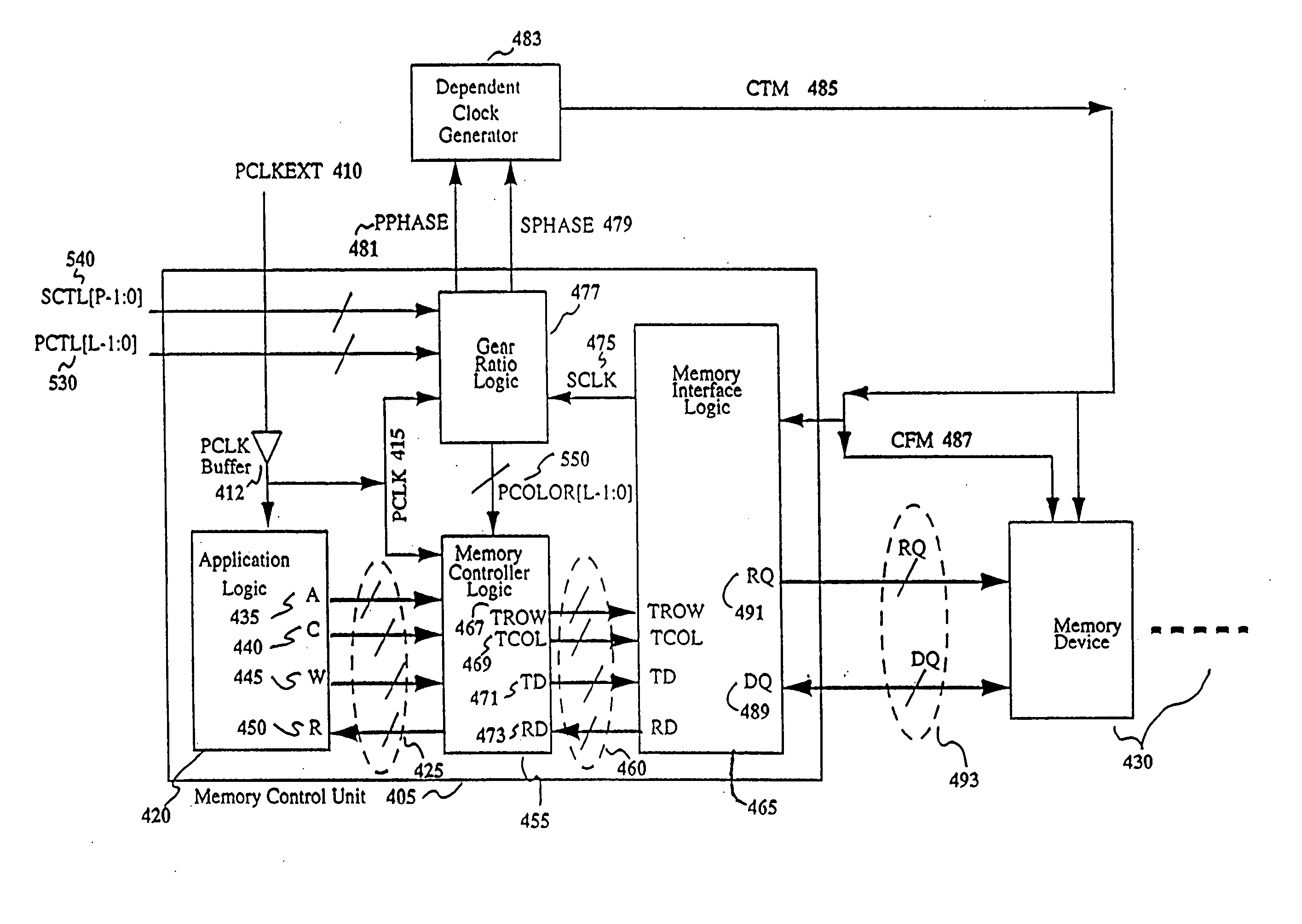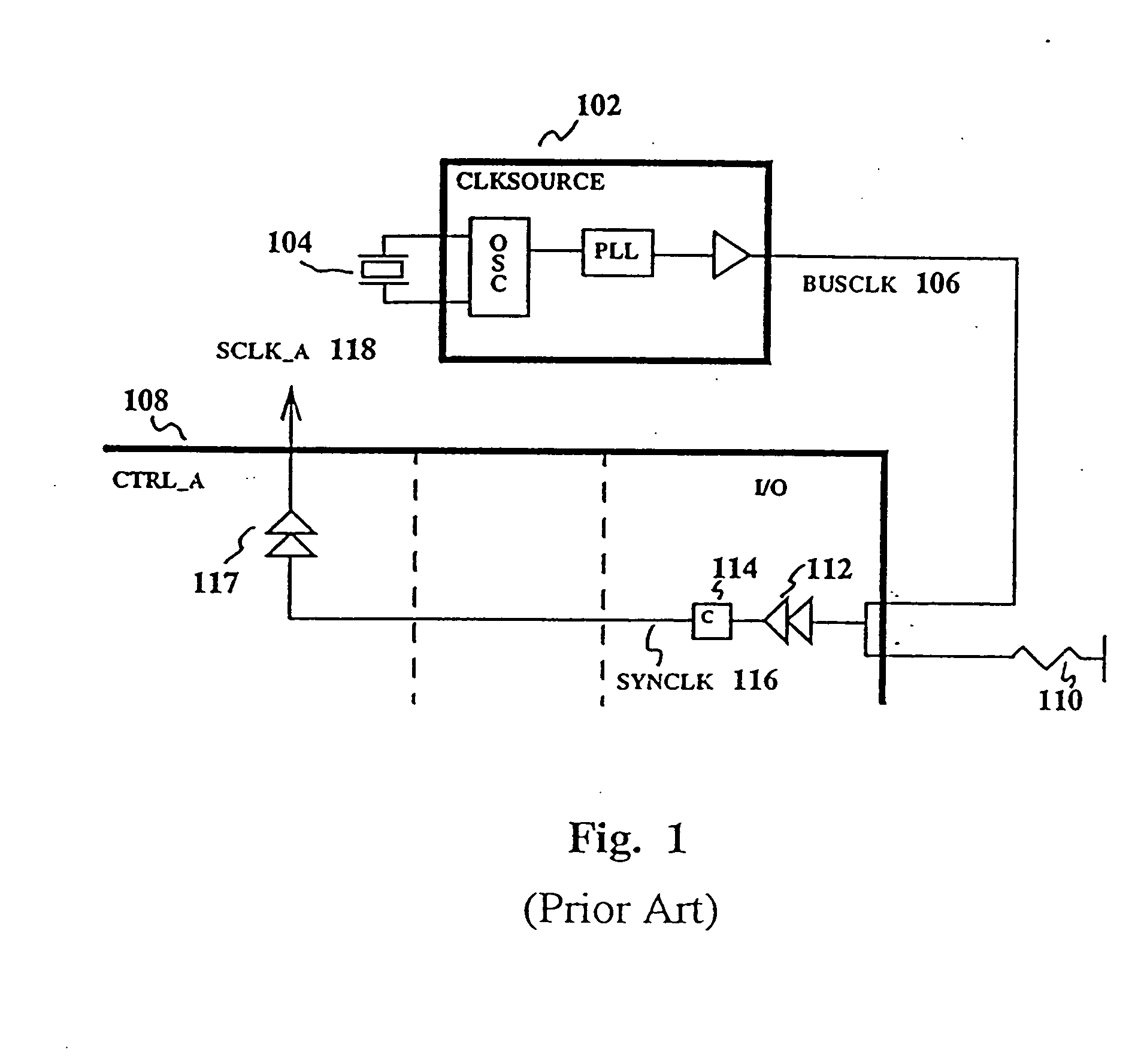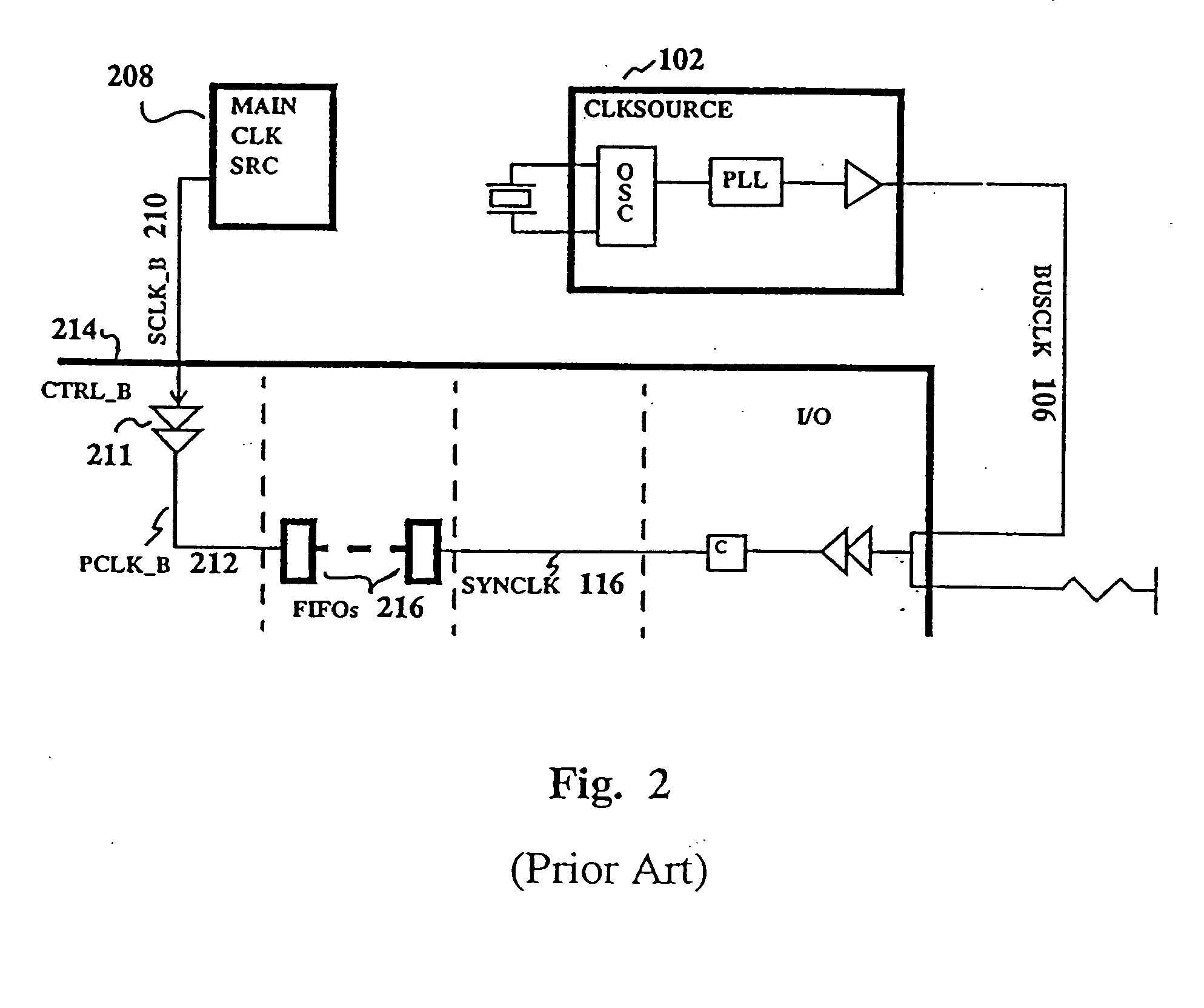Apparatus and method for generating a distributed clock signal
a distributed clock and signal technology, applied in the field of electronic circuits, can solve the problems of generating a number of problems for circuit designers and manufacturers, complicating the design of synchronization circuits, and adding unwanted latency to synchronization logic, so as to minimize the amount of latency
- Summary
- Abstract
- Description
- Claims
- Application Information
AI Technical Summary
Benefits of technology
Problems solved by technology
Method used
Image
Examples
Embodiment Construction
[0042] One aspect of the present invention applies where the clock periods (or frequencies) of two domains of digital logic have a fixed ratio. When this relationship holds, the two domains are said to be operating in a gear ratio fashion. Therefore, two clocks can be said to have a gear ratio when an integer multiple of the first clock's period equals the same amount of time as an integer multiple of the second clock's period. For example, two clocks have a 4 / 3 gear ratio if four cycles of the first clock equal three cycles of the second clock.
[0043]FIG. 3 shows the clock waveforms of an example gear ratio where three cycles of clock PCLK_C 302 equal two cycles of clock SCLK_C 304, or 3* (cycle of PCLK_C)=2* (cycle of SCLK_C). In FIG. 3, PCLK_C 302 and SCLK_C 304 are phase aligned at the end of the common period, for example by being generated from the same crystal. Since gear ratio is defined as the ratio of the two clock frequencies, in the above example the gear ratio of PCLK_C...
PUM
 Login to View More
Login to View More Abstract
Description
Claims
Application Information
 Login to View More
Login to View More - R&D
- Intellectual Property
- Life Sciences
- Materials
- Tech Scout
- Unparalleled Data Quality
- Higher Quality Content
- 60% Fewer Hallucinations
Browse by: Latest US Patents, China's latest patents, Technical Efficacy Thesaurus, Application Domain, Technology Topic, Popular Technical Reports.
© 2025 PatSnap. All rights reserved.Legal|Privacy policy|Modern Slavery Act Transparency Statement|Sitemap|About US| Contact US: help@patsnap.com



